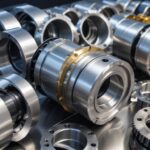
Several solutions to the problems of titanium alloy parts processing
3 October 2024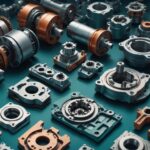
Identifying Common Missteps in Mechanical Design Practices
10 October 2024As an indispensable tool for machining, cutting tools may be damaged, worn, and chipped during machining. How do we solve these problems?
Manifestations of tool damage
1) Micro-chipping of cutting edges
When the material structure, hardness, and allowance of the workpiece are uneven, a large rake angle can result in low cutting-edge strength. Additionally, if the processing system is not rigid enough and produces vibration, or if intermittent cutting is performed, the grinding quality may be poor, and the cutting edge may be prone to micro-chipping. This means that small chips, notches, or peeling may occur in the cutting-edge area. When this happens, the tool will lose some of its cutting ability, but it can still function. However, during continued cutting, the damaged part of the cutting edge area may expand rapidly, resulting in greater damage.
2) Chipping of cutting edge or tooltip
This type of damage usually occurs under more severe cutting conditions compared to those that cause micro-chipping of the cutting edge, or it can be a more advanced form of micro-chipping. The size and range of the chipping are larger than micro-chipping, causing the tool to completely lose its cutting ability and requiring it to stop working. This type of chipping of the tooltip is often referred to as tip drop.
3) Blade or tool breakage
In situations where cutting conditions are extremely poor, such as when the cutting amount is too large, there is an impact load, or there are microcracks in the blade or tool material, the tool may be subject to residual stresses due to welding and grinding. Additionally, factors such as careless operation can also contribute to the potential for the blade or tool to break. Once this type of damage occurs, the tool becomes unusable and must be discarded.
4) Blade surface peeling
For very brittle materials such as cemented carbide, ceramics, and PCBN with high TiC content, surface peeling may occur due to defects, potential cracks in the surface structure, or residual stress from welding and grinding. This is more likely when the cutting process is unstable or when the tool surface experiences alternating contact stress. Peeling can happen on both the front and back blade faces, and the peeled material is flaky with a large affected area. Coated tools are more prone to peeling. While the blade can still function after slight peeling, severe peeling will cause it to lose its cutting ability.
5) Plastic deformation of cutting parts
Tool steel and high-speed steel may undergo plastic deformation due to their low strength and hardness in their cutting parts. When cemented carbide is subjected to high temperatures and triaxial compressive stress, it can also experience surface plastic flow, leading to the cutting edge or tip undergoing plastic deformation and collapsing. This usually happens when CNC machining processes hard materials with a large cutting amount.
The elastic modulus of TiC-based cemented carbide is smaller than that of WC-based cemented carbide, which means that it is more susceptible to plastic deformation and may fail more quickly. PCD and PCBN, on the other hand, generally do not undergo plastic deformation.
6) Thermal cracking of the blade
When a cutting tool experiences alternating mechanical and thermal loads, the surface of the cutting part will undergo alternating thermal stress due to repeated thermal expansion and contraction. This can lead to fatigue and cracking of the blade. For instance, during high-speed milling with a cemented carbide milling cutter, the teeth are constantly subjected to periodic impact and alternating thermal stress, resulting in the generation of comb-like cracks on the front face.
Even if some cutting tools do not exhibit obvious alternating loads and stresses, thermal stress can still occur due to temperature differences between the surface and inner layers. Moreover, inevitable defects within the cutting tool material can also lead to blade cracks. After cracks form, the tool may continue to function for a period of time, but in some cases, the crack could rapidly expand, leading to blade breakage or severe peeling of the blade surface.
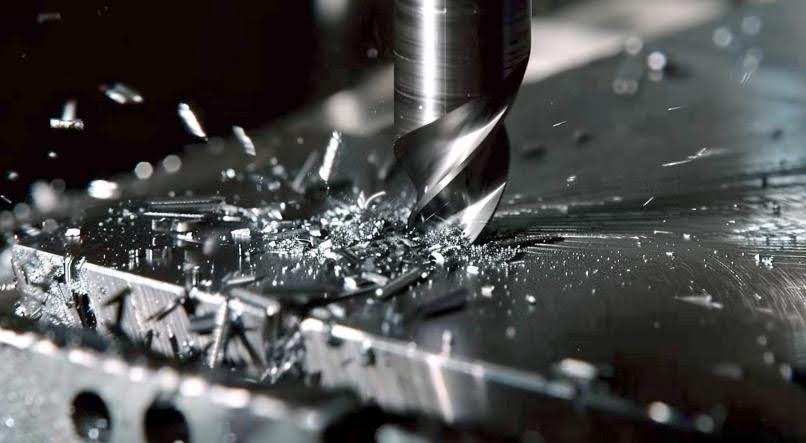
Tool wear
1. Classification by wear causes
1) Abrasive wear
The processed material often contains very hard tiny particles that can create scratches on the tool surface, known as abrasive wear. This type of wear is present on all surfaces and is most noticeable on the front cutting surface. Hemp wear can occur at different cutting speeds, but at low speeds, the wear caused by other factors is not obvious due to the low cutting temperature, making abrasive wear the main cause. Additionally, the lower the hardness of the tool, the more severe the abrasive hemp wear.
2) Cold welding wear
During cutting, there is significant pressure and strong friction between the workpiece, cutting tool, and the front and rear cutting edges, leading to cold welding. Cold welding occurs due to the relative movement between the friction pairs, and the resulting wear is more pronounced at medium cutting speeds. Based on experiments, brittle metals exhibit stronger cold welding resistance compared to plastic metals.
Additionally, multiphase metals are less resistant to cold welding than unidirectional metals, and metal compounds have less cold welding tendency than single substances. Group B elements and iron in the chemical periodic table have a lower cold welding tendency. Cold welding is more severe when cutting high-speed steel and cemented carbide at low speeds.
3) Diffusion wear
When cutting at high temperatures, the chemical elements of the workpiece and the tool mix and change the composition of the tool's surface, making it fragile and causing increased wear. This mixing of elements happens continuously, with high-depth gradients diffusing into low-depth gradients. For example, at 800℃, cobalt in cemented carbide rapidly diffuses into the chips and workpieces, while WC decomposes into tungsten and carbon and diffuses into the steel. Similarly, when PCD tools cut steel and iron at temperatures above 800℃, carbon atoms from the PCD transfer to the workpiece's surface, forming a new alloy and causing graphitization of the tool's surface.
Cobalt and tungsten diffuse more readily, while titanium, tantalum, and niobium have strong anti-diffusion properties, making YT-cemented carbide more wear-resistant. When cutting ceramics and PCBN at temperatures of 1000℃ to 1300℃, diffusion wear is not significant. Additionally, during cutting, the workpiece, chips, and tools generate thermoelectric potential in the contact area, which promotes diffusion and accelerates tool wear. This type of wear, caused by thermoelectric potential, is known as "thermoelectric wear."
4) Oxidative wear
When the temperature increases, the surface of the tool undergoes oxidation, producing softer oxides. These oxides are then rubbed by the chips, causing a type of wear known as oxidative wear. For instance, at temperatures ranging from 700℃ to 800℃, the oxygen in the air reacts with cobalt, carbides, titanium carbides, and other CNC machining components in cemented carbide, forming softer oxides. At 1000℃, PCBN chemically reacts with water vapor.
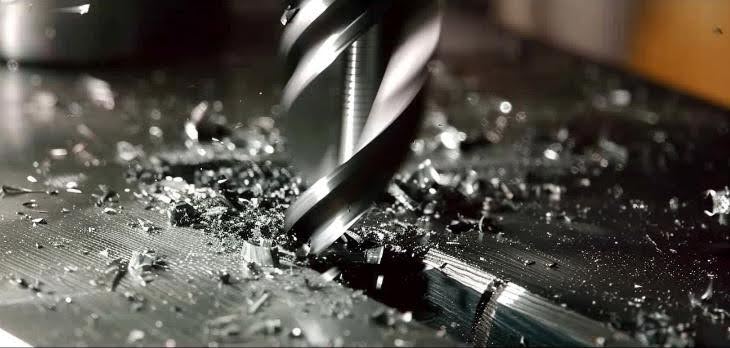
2. Classification by wear form
1) Rake face wear
When cutting plastic materials at high speed, the part of the rake face close to the cutting force will wear into a crescent shape under the action of the chips. This type of wear is also known as crescent wear. In the early stages of wear, the tool rake angle increases, which improves the cutting conditions and is conducive to the curling and breaking of the chips. However, as the crescent wear increases further, the strength of the cutting edge is greatly weakened, which may eventually cause the cutting edge to break. When cutting brittle materials or cutting plastic materials at a lower cutting speed and thinner cutting thickness, crescent wear generally does not occur.
2) Tool tip wear
Tooltip wear refers to the wear on the back face of the tooltip arc and the adjacent secondary back face. It is a continuation of the wear on the back face of the tool. Due to poor heat dissipation conditions and stress concentration in this area, the wear rate is faster than on the back face. In some cases, a series of small grooves with a spacing equal to the feed amount may form on the secondary back face, which is known as groove wear.
These types of wear are primarily caused by the hardened layer and cutting lines of the machined surface. Groove wear is most likely to occur when cutting difficult-to-cut materials that have a strong tendency to harden. Tooltip wear has the most significant impact on the surface roughness and machining accuracy of the workpiece.
3) Back face wear
When cutting thick plastic materials, the tool may not fully contact the custom plastic machining workpiece due to a built-up edge. This can result in the formation of a wear band with a back angle of 0 on the back face of the tool. The wear degree of the back face can be measured by the width VB of the wear band in the middle of the cutting edge's working length.
Flank wear is common in all types of tools, especially when cutting brittle or thin plastic materials. Measurement of the wear band width VB is a simple way to indicate the degree of tool wear. A larger VB indicates greater cutting force, leading to cutting vibration and potentially affecting machining accuracy and surface quality due to wear at the tooltip arc.

3. Methods to prevent tool breakage
- When choosing tool materials, consider the characteristics of the processed materials and parts. Ensure that the selected materials have the necessary hardness, wear resistance, and toughness.
- Select tool geometric parameters carefully, such as front and rear angles, main and secondary deflection angles, and blade inclination angles to ensure good cutting edge strength. Additionally, grinding a negative chamfer on the cutting edge can help prevent tool breakage.
- Ensure high-quality welding and grinding to avoid defects caused by poor workmanship. Tools used in key processes should be ground to improve surface quality and checked for cracks.
- Carefully select cutting parameters to avoid excessive cutting force and high cutting temperature, which can lead to tool breakage.
- Ensure that the processing system has good rigidity and minimize vibration as much as possible.
- Use correct operating methods to prevent the tool from bearing sudden loads or minimize the impact of such loads.
Built-up edge
1) Causes of formation
Near the cutting edge, in the area where the tool and the chip make contact, the metal from the chip gets embedded in the uneven surface of the cutting edge due to the pressure, creating a solid metal-to-metal contact and causing bonding. This area is known as the bonding area.
In this bonding area, a thin layer of metal builds up on the cutting edge of the chip as a result of severe deformation and strengthening at the appropriate cutting temperature.
As the chips continue to flow out, the accumulated material on the cutting edge will slide relative to the upper layer of the chips and form the basis of the built-up edge under the pressure of the subsequent cutting flow. Subsequently, a second layer of accumulated cutting material will form on top of it, and this continuous accumulation will create a built-up edge.
2) Characteristics and influence on cutting
The built-up edge is 1.5 to 2.0 times harder than the workpiece material. It can replace the rake face for cutting, protecting the cutting edge and reducing rake face wear. However, when the built-up edge falls off, the fragments flowing through the tool-workpiece contact area will cause wear on the tool's back face.
After the built-up edge is formed, the working rake angle of the tool increases significantly, which reduces chip deformation and cutting force.
Since the built-up edge protrudes beyond the cutting edge, the actual cutting depth increases, affecting the dimensional accuracy of the workpiece.
The built-up edge causes a "plowing" phenomenon on the workpiece surface, affecting the surface roughness of the workpiece.
The fragments of the built-up edge adhere or embed into the workpiece surface, forming hard spots and affecting the quality of the machined surface of the workpiece.
From the above analysis, it can be seen that the built-up edge could be more conducive to cutting, especially for finishing.
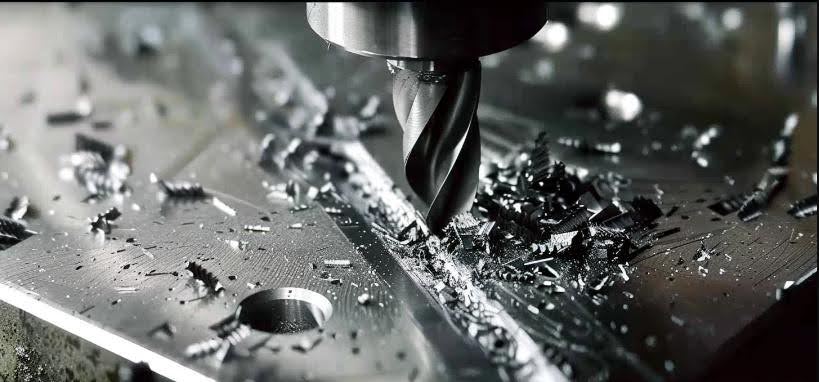
3) Control measures:
Avoid the formation of a built-up edge by preventing the underlying material of the chip from bonding or deforming the front cutting edge. The following measures can be taken for this purpose:
- Reduce the roughness of the front cutting edge.
- Increase the rake angle of the tool.
- Reduce the cutting thickness.
- Use low-speed cutting or high-speed cutting to avoid cutting speeds that are prone to forming built-up edges.
- Perform appropriate heat treatment on the workpiece material to increase its hardness and reduce plasticity.
- Use cutting fluid with good anti-bonding performance, such as extreme pressure cutting fluid containing sulfur or chlorine.
If you wanna know more or inquiry, please feel free to contact [email protected]
Anebon depends on sturdy technical force and continually creates sophisticated technologies to meet the demand for custom CNC machining, 5-axis CNC milling, and die cast automobiles. All the opinions and suggestions will be greatly appreciated! Good cooperation could improve both of us and lead to better development!



